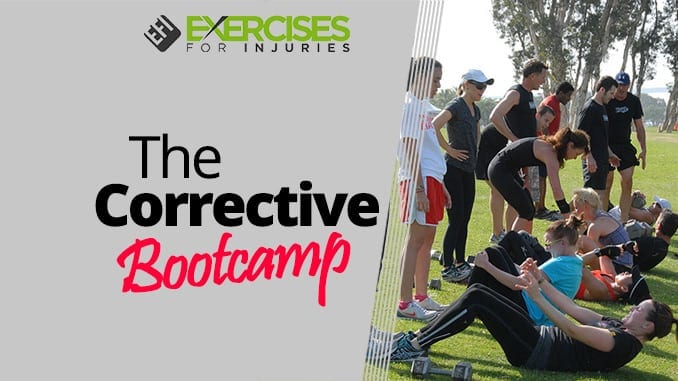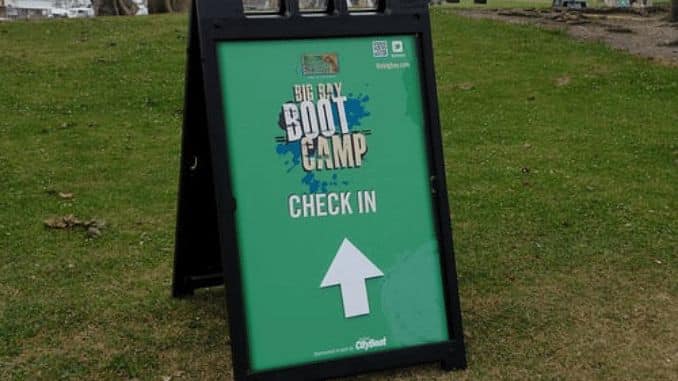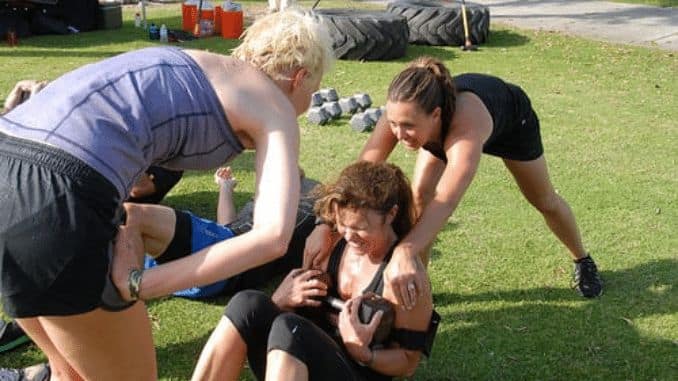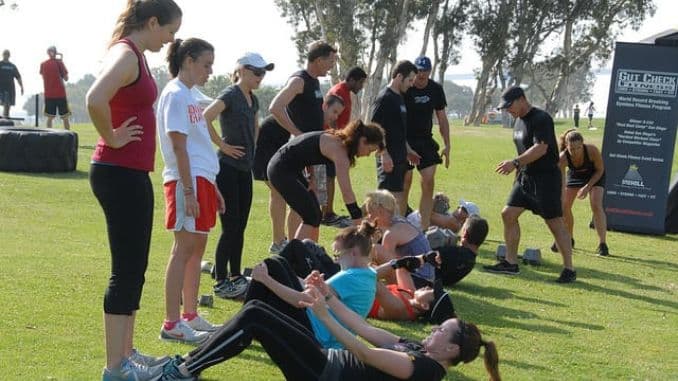
A corrective Bootcamp usually lasts between three and six weeks. The duration will depend on the issues and the employee’s performance. You should set a clear set of rules and expectations for the Bootcamp.
Strength guys often focus on athletes, but many are starting to see that their skills can help so many more people.
One of those strength guys is Mike Robertson.
Mike is a well-known strength coach ( plus I brought him up to Vancouver to present a few years back), but he has recently opened his facility to non-athletes and started boot camps.
He did not like what he saw when planning the programs for his boot camp. So he took what he did with his athletes and applied it to his boot camps.
Here is an article from Mike on what he saw when he first looked at the boot camps that were out there.
Rick
Take it away, Mike
Bootcamps are currently all the rage in the fitness industry.
A corrective Bootcamp is a structured program for fixing problem employees and reducing the future reoccurrence of issues. This is a good and bad thing.
It’s a good thing because it’s getting more and more people in shape and focused on changing their physiques for the better.
It’s also a cost-effective option, which affords people who can’t afford a personal trainer some additional motivation and coaching from a real person.
That part, I love it.
The part I’m not so in love with?
The quality of the Bootcamp themselves.
Some boot camps are far too random – it’s just a mish-mash of whatever exercises the instructor feels like prescribing that day.
For others, there are no progressions or regressions on hand – it’s all about doing more work or taking less rest to give a training effect.
And sometimes, the exercise selections themselves are just atrocious.
So what gives?
Are boot camps destined to suck?
Should you close your doors immediately and return to semi-private or personal training if you run a camp?
I don’t think so.
What we need is a systematic and proven approach to boot camps.
Smart/corrective exercise
If you’ve read Rick’s blog for an extended period, you know that he’s all about safe and effective exercise.
Some might even call it “corrective exercise,” although I’m starting to loathe that term myself.
Too often, clients assume that “corrective” exercise means “easy” exercise.
And that’s not the case – or it shouldn’t be.
Smart/corrective exercise doesn’t mean coasting or taking it easy; it simply means fitting the exercise to the person, not the person to the exercise.
If a person has a history of knee pain, they may not be able to squat with an upright torso.
But if you allow them to incline a bit more and hinge at the hips, you now have a safe and effective squatting variation for people that used to think that “squatting hurt their knees.”
On the other hand, someone with a history of back pain may be unable to hinge. In this case, putting them in a more upright posture early on will reduce shear forces on the back, allowing them to get in a good leg workout without excessively stressing the lower back.
Simple tweaks like this are game-changers for the group fitness instructor.
The most egregious error I see when it comes to boot camps is starting people off with exercises that are too challenging.
As a coach, I would much rather start someone off with an exercise that is too easy versus too hard initially.
If you give a client an exercise that’s too hard, they’ll not only struggle immensely, but this will shake their confidence early on.
Maybe they’ll feel unsuccessful or that this isn’t the right thing for them.
This is the last thing I want to have happen!
Why have a Corrective Bootcamp?
It would help if you considered having a corrective Bootcamp when you have tried all other methods of improving an employee’s performance. First, you must give the person a chance to understand their performance. You should schedule an extra meeting with the person so that you can understand the issues. If the person is not committed to improving, you should look into other ways of helping them. There are many ways of helping an employee to improve their performance. It would help if you tried giving them feedback on their performance.
I don’t believe in giving all kids 1st place ribbons, but I believe in all my clients having success early on in their program.
I want them to feel like they’re getting better in that first session.
That this is the place for them and that I can help them achieve all of their fitness goals.
The term I like to use here is traction.
I want my clients to generate traction and achieve some small success early on so they’re eager and motivated to continue.
Maybe they can’t do “guy” push-ups on Day 1 – that’s fine!
What about push-ups from the knees?
Or a push-up ISO hold?
If I can find the right regression, I not only allow them to taste success, but we begin to lay a physical foundation for them to build from going forward.
In my eyes, this is a true win-win.
If you want a systematic approach to Bootcamp training, I’d highly recommend checking out our new product, Bootcamp in a Box.
This DVD and manual include 6-months of safe and effective Bootcamp programming, progressions and regressions, and the coaching cues you’ll need to be successful.
The program is on sale this week only for $197 ($100 off the standard price), and I guarantee it will be a game-changer for your boot camps.
All the best
MR
P.S. – Bootcamp in a Box gives you all the tools necessary to run a safer and more effective Bootcamp.




